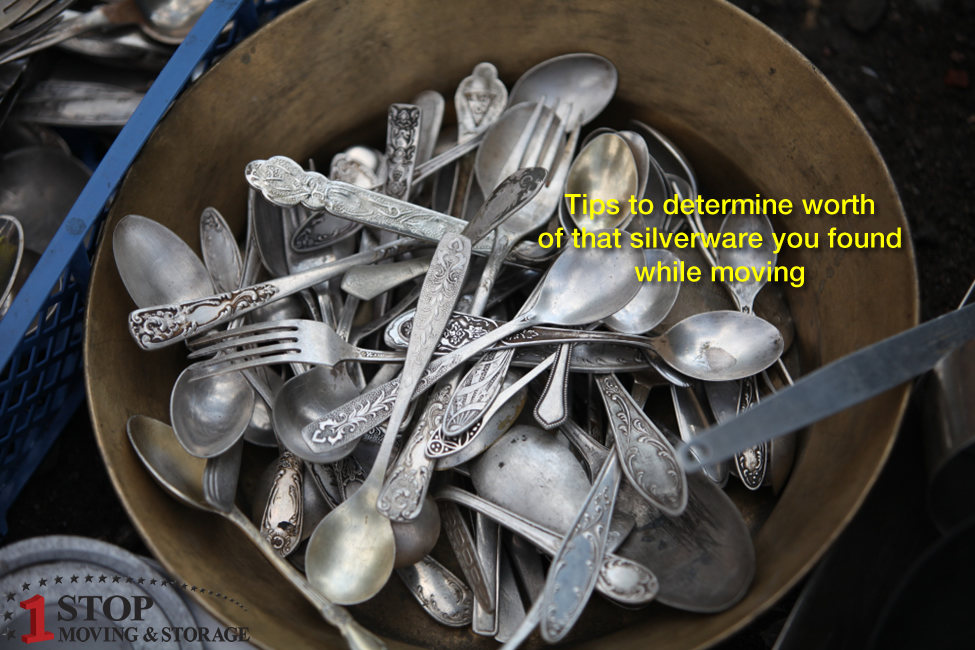
When moving there is a good chance treasures overlooked for years appear. Customers using a moving service like to get insurance during the process. As a moving and storage company, we get questions of how to value property, and refer to appraisers for information. However, we can do a little research to offer tips to make your move as easy as possible. Today we look at silverware. If you pulled out silverware from your grandmother or the set from your wedding a few tips to identify a worth.
If you’ve ever received antique silverware, you’re probably wondering how much it’s worth. While having a professional appraiser is the best way to determine your silverware’s value, some tricks help determine if your flatware has any value.
1. Check the authenticity of your silverware
The first step in determining the value of your silverware is checking for authenticity. If you doubt whether a piece is real, there are many ways to check its authenticity. The most common methods include looking at the maker’s marks, hallmarks, and designs on each piece of silverware.
You can find out who made your piece by looking at the bottom or back of the object for a hallmark stamp, which will be either an image or letters that indicate which country produced it and what year it was made (e.g., 925 Italy).
If there is no inscription, your items might be made from base metals such as copper, nickel, and zinc (which will be worth little).
2. Determine if it’s sterling or silver-plated
First, make sure you have sterling-silver items and not just silver-plated. Authentic silverware comprises 92.5% silver and will have specific markings. Look for markings such as “925,” “.925,” or “sterling.” You may also find some pieces with markings such as “STG” or “STER” to state that it’s made of sterling silver.
Silver-plated silverware is much more durable but also less expensive. In this case, the piece is made of another material and has a thin layer of silver as a coat. You will also notice these pieces are lighter in color and heavier.
3. Look at the pattern
Whether you’re looking at flatware or other silverware items, the pattern can help you determine how much they’re worth. Some patterns are considered rare and can have a higher value, particularly for collectors.
Pieces with family monograms or marked with initials are harder to sell and usually have a lower value. A professional appraisal can help you determine if the engraved pattern of your pieces indicates a higher value.
4. Figure out if you have a collection
Look at all the pieces you have and pay close attention to similarities within the pieces. You must likely have a set or a collection if they have the same markings and patterns. A collection will be more valuable than stand-alone items.
Weight is also an important factor in determining the value of your silverware. The weight of a piece of silverware indicates its quality, so you can use it to show how good your pieces are.
5. Check for signs of damage
Finally, it’s important to check for signs of wear or damage on your pieces. Make sure there aren’t any signs of damage on any part of the item; this means chipped-off corners, worn-down edges, or stains.
Then compare these with what others have sold for in the past. If you want to sell, you will do your homework to get the best price possible.– Written by Gerladine Orentas in partnership with silverware retailer Silver Superstore.
One Stop moving and storage serves San Diego counties for moving and storage services. We do not provide appraising services of any kind.


